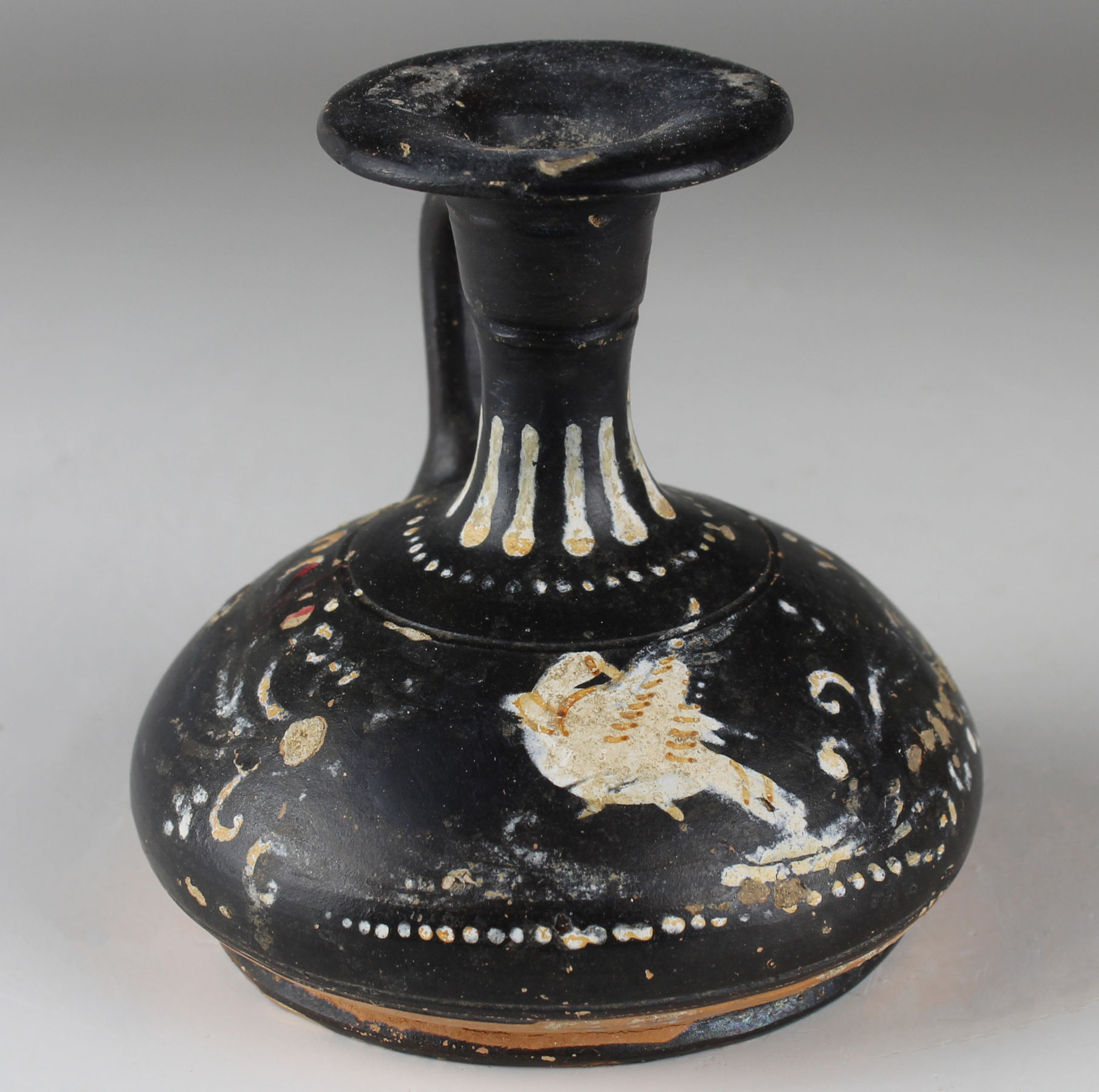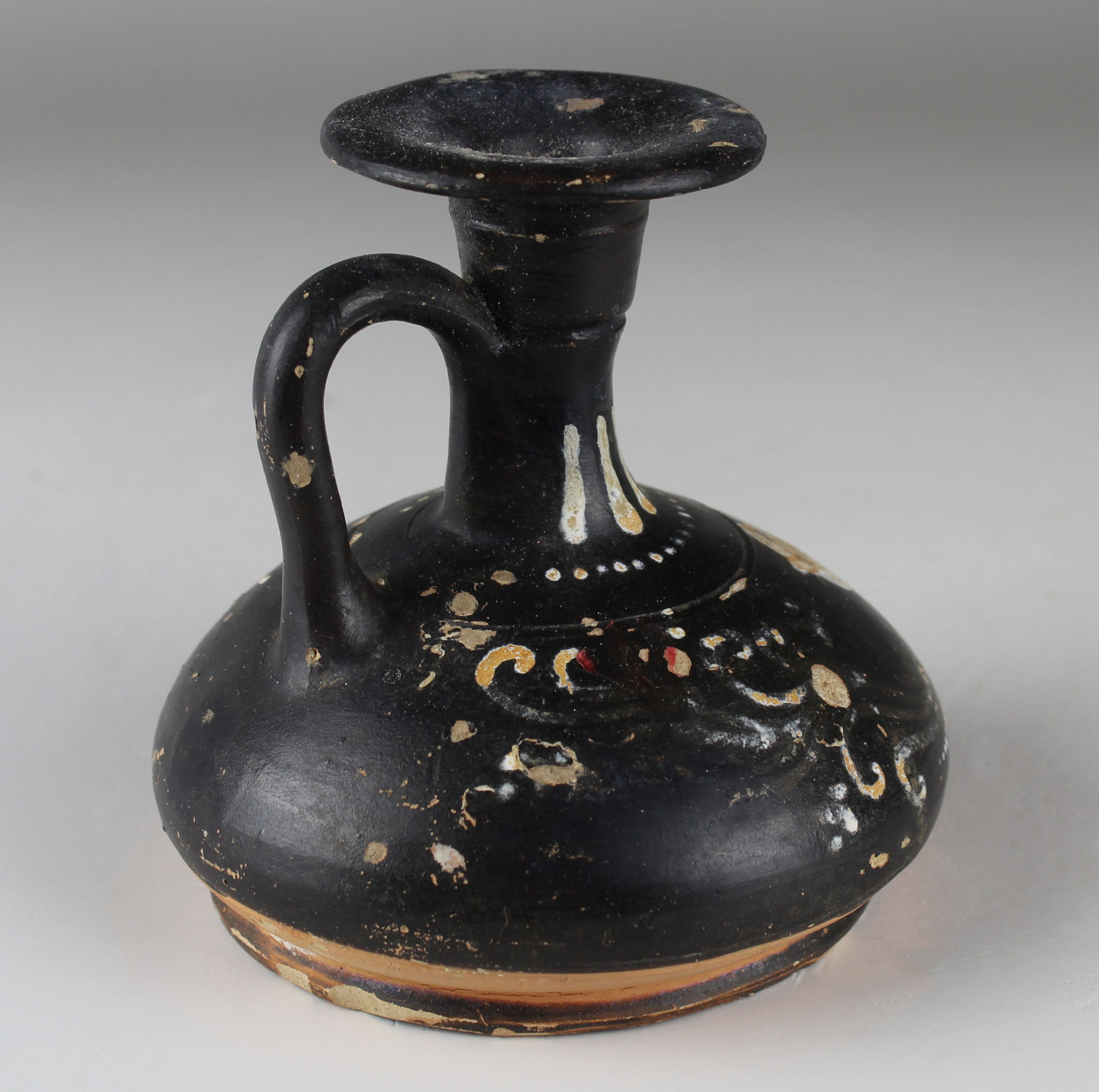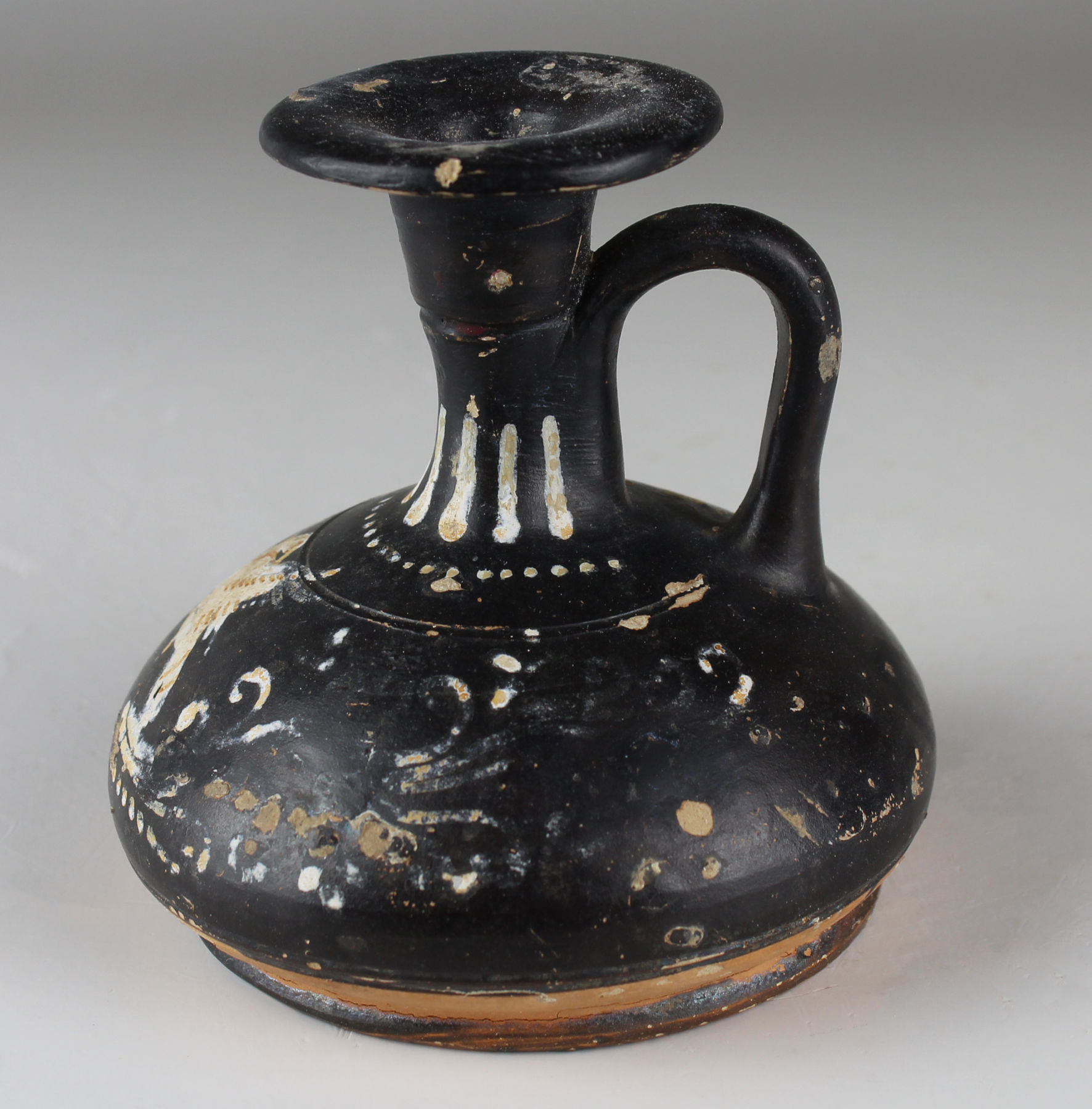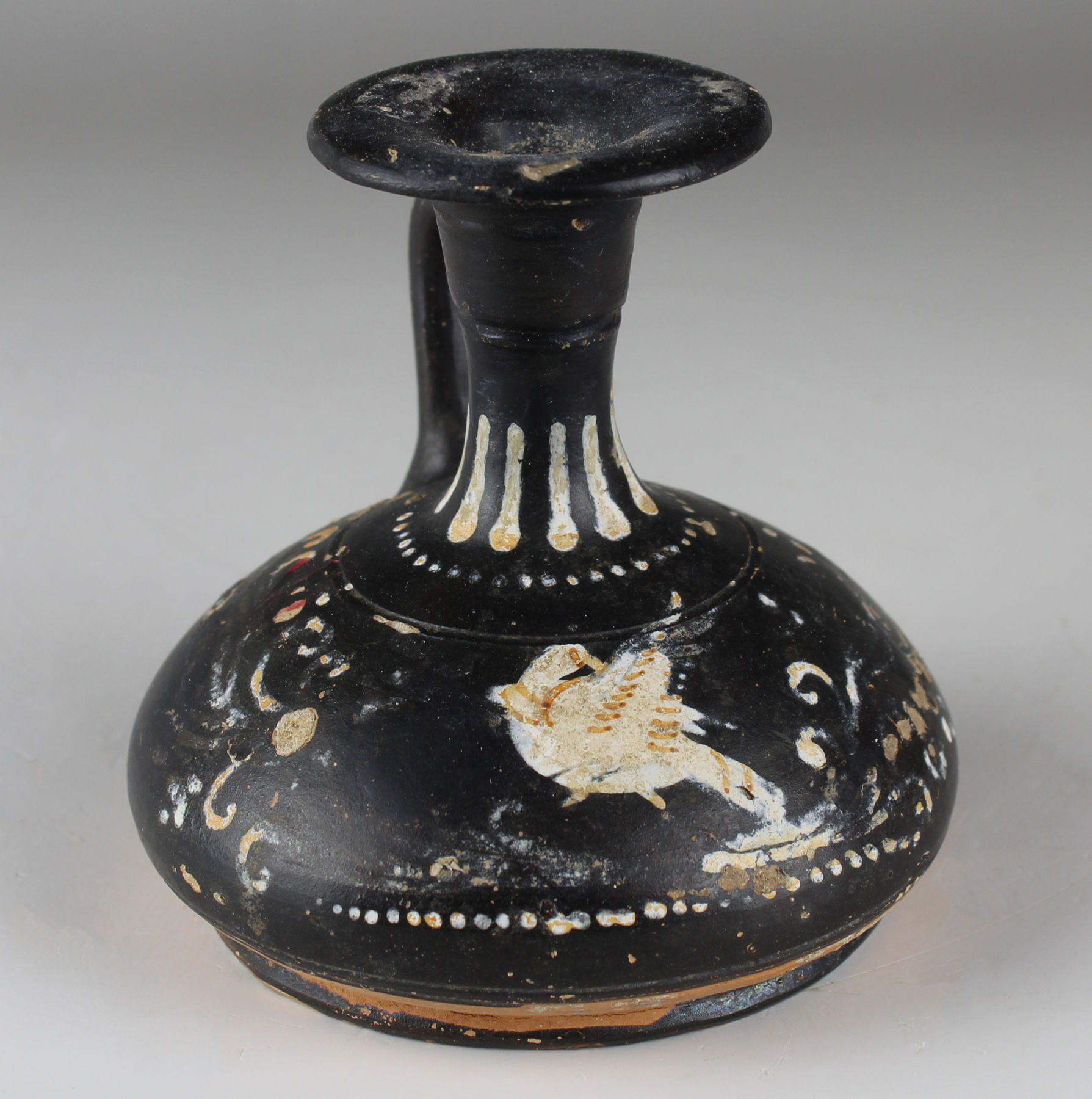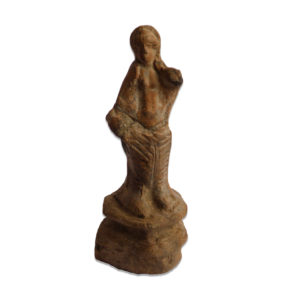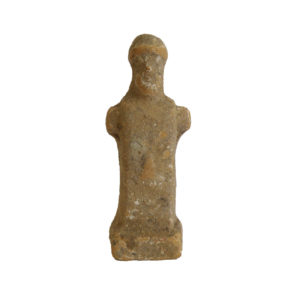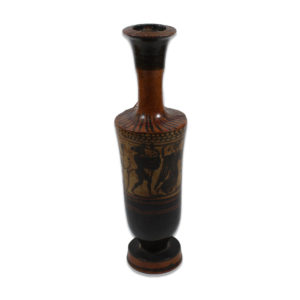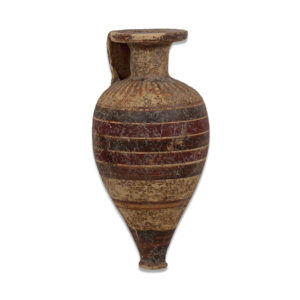Description
| ITEM | Squat lekythos with a bird |
| MATERIAL | Pottery |
| CULTURE | Greek, Gnathia |
| PERIOD | 4th Century B.C |
| DIMENSIONS | 80 mm x 80 mm |
| CONDITION | Good condition |
| PROVENANCE | Ex French private collection, D., acquired between 1970 – 1990 |
Like the aryballos, in that it has a narrow neck and a single handle, the lekythos (pl. lekythoi) is generally a taller vessel with a small, deep mouth. The Greek word lekythos was undoubtedly used for the various forms considered here, although it does appear that it was used for oil-vessels in general.
In the early sixth-century, the lekythos has an oval-shaped body, but as with the hydria and neck-amphora, a shouldered-type is developed around the middle of the century. This form, with a tapering body, continues to be decorated by black-figure painters. But it is the cylindrical type, first preserved from the last third of the sixth-century, that will be predominant in the fifth century, and it is this form that is decorated with polychrome figures on white-ground. Fragmentary examples (and X-ray photography) reveal that some had a smaller inner chamber, to limit the volume of oil that could be held.
The role of the white-ground (cylindrical) lekythoi in funerary ritual is made clear both by their excavation from cemeteries and their depiction, invariably on lekythoi themselves, standing or fallen over at the graveside. Late in the fifth century, some massive examples of the shape are produced (‘Huge Lekythoi’), serving perhaps as equivalents for stone grave-markers.
The broad-footed squat lekythos lacks the sharp shoulder of the cylindrical type. It begins to be made late in the fifth century.


